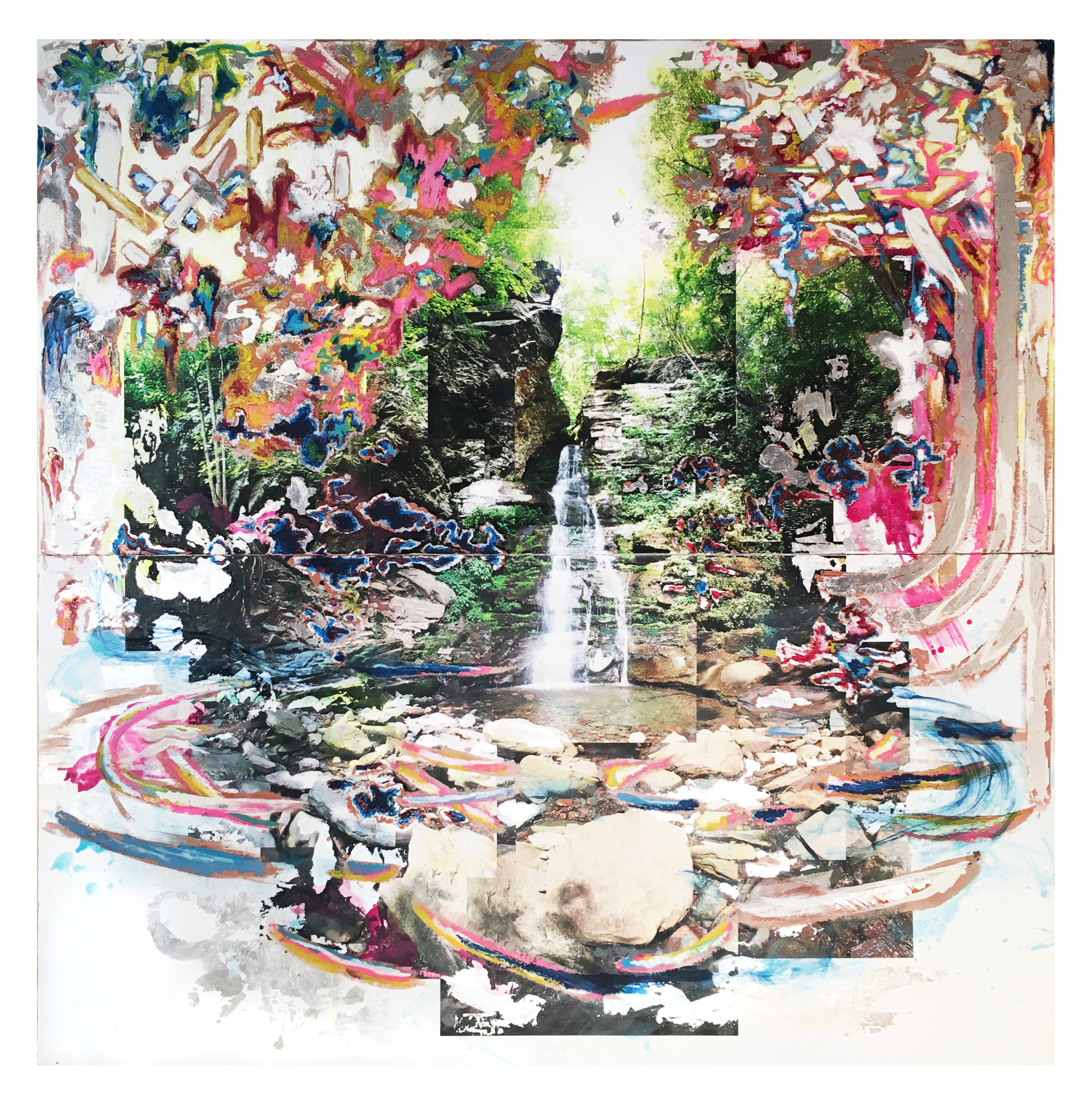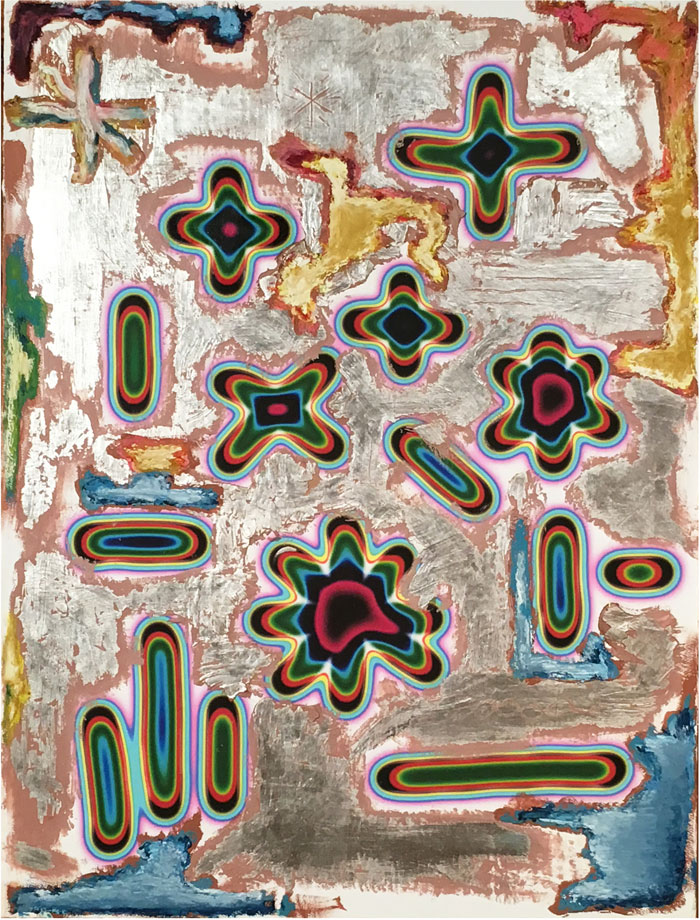In the mixed-media works of his exhibition “Neo-American Transcendental,” Michael Maxwell employs materials ranging from the prehistoric to the digital. Clay, natural mineral pigments, plant dyes, wheat paste, quartz crystal, silver and gold leaf, beeswax, encaustic, and oil and acrylic paint, are all applied on top of, or amongst, digitally-created scenes or patterns. Viewed as a maximalist’s take on primitive mark-making or a historically-minded Abstract Expressionism, Maxwell’s work deserves attention, but where his work truly stands out is in his handling of the digital. Like other artists who have successfully incorporated it into their work, Maxwell’s is not “about” the computer. Maxwell takes the computer—one of the biggest influences on contemporary art and painting—and folds it into something earthen and materially complex, brilliantly enhancing our sensitivity to it.
In several of his works, like Blue Hole Excursion (2018), Maxwell has “painted” onto large prints of nature scenes. They’re not simply photographs, though. The scenes are digitally-created composites of smaller images and it’s clear he wants you to see the stitches of the minor misalignments. By transitioning his brushstrokes from appearing flat on the surface to entering the third dimension of the photograph, Maxwell pulls the digital construction of space into his shamanistic stirring of materials. In other works, like In the Morning Light Many Things Seem Possible (2018), he’s affixed cutouts of digitally-produced patterns to his compositions—there, too, the direction and texture of his brushstrokes respond to the patterns of the digital prints, appearing to vibrate at resonant frequencies. Even when he’s not literally using the digital, his works subtly reference its aesthetic: often they feature groups of parallel marks that seem to align to an invisible structure, just barely suggesting a loose or nascent grid.
Maxwell situates his digital elements beautifully amongst other dynamic features and textures of pivoting functions. His loose-grid marks resemble rudimentary symbols, especially when they intersect to form crosses, asterisks and diamonds, which jangle as they hang askew in space. Many marks also appear to glow or expand, due to their soft edges and multiple outlines of successive color. From afar, the surfaces look like they have been eroded or torn away, but at the same time, especially in Tiffany (2018), the proliferation of marks appear to have overgrown the bones of an underlying image, almost like a corrupted digital image might leave behind remnants of a visual structure.
Emerging alongside the varied effects of his surfaces, the mold and dust of his palette, the glitches and electric pink, and the religious glow of gold leaf, is a strong sense of prehistory and of the human story. The digital, in Maxwell’s vision of the natural world, shares the same space as earthen and old-world materials, which are literally cracking on the surface and crumbling off the canvas. Under the trance of “Neo-American Transcendental,” the digital—the non-physical realm where we store our lives—slowly slips into tomorrow’s old dreams.




















0 Comments